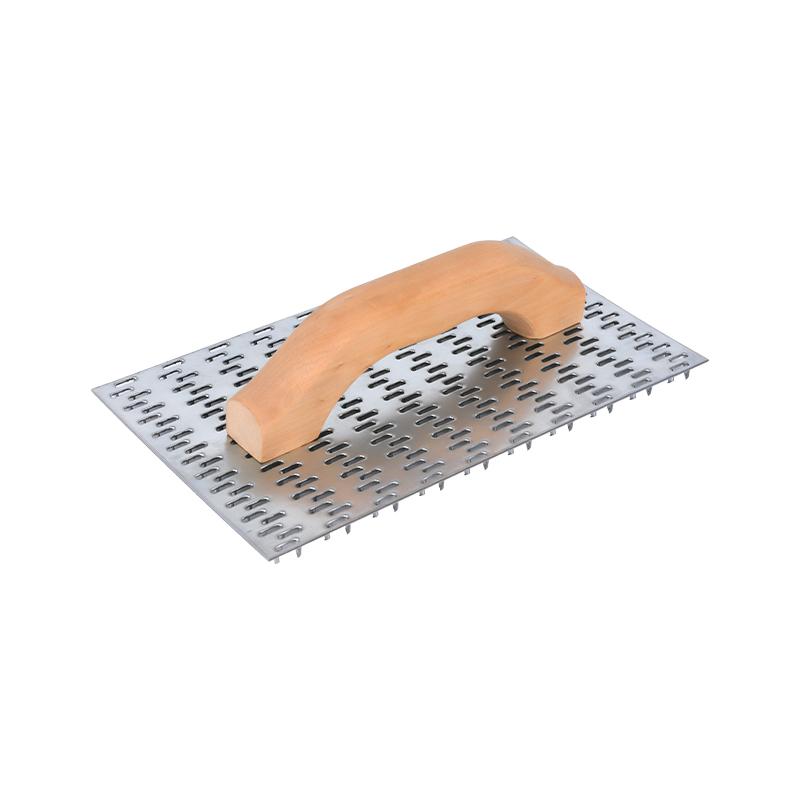Product Craftsmanship of Plastering Spatulas

A plastering spatula is a crucial tool in the process of applying and smoothing plaster, essential for achieving a smooth, even finish on walls and ceilings. The craftsmanship involved in the creation of plastering spatulas ensures that they are not only effective but also durable and comfortable for long-term use in demanding tasks.
The quality of materials used in the production of a plastering spatula significantly affects its performance and durability. The blade of a plastering spatula is often made from stainless steel, which provides strength, flexibility, and resistance to rust and corrosion. Stainless steel is an ideal material for tools exposed to moisture, as it resists degradation and maintains its integrity even under wet conditions, typical during plastering jobs.
The handle, which is an equally important part of the spatula, can be made from a variety of materials, depending on the desired comfort and durability. Common handle materials include wood, plastic, or rubber, each offering distinct advantages. Wood handles are known for their traditional appeal and solid grip, while plastic or rubber handles are often molded to fit the hand comfortably, reducing hand fatigue during extended use. Rubber-coated handles are designed to enhance grip, especially in damp conditions.
A key aspect of plastering spatula craftsmanship lies in the design of the blade. The blade should have the right amount of flexibility to allow for a smooth application of plaster, yet it must also be sturdy enough to handle the rough surfaces typically encountered during plastering. The thickness of the blade is an important factor here; thicker blades offer strength and durability for tougher tasks, while thinner blades are better suited for finer, more detailed work.
To ensure a smooth finish, the edge of the spatula is often slightly beveled, which aids in applying an even coat of plaster. Some spatulas are designed with a rounded edge, which is ideal for achieving curves and smooth transitions. Others may feature a straight edge, best suited for covering large flat surfaces.
Once the materials are assembled and shaped, the plastering spatula undergoes a finishing process that ensures the blade is free from sharp edges and imperfections. The surface of the blade is smoothed to ensure that it glides easily over the plastered surface, reducing the risk of scratching or damaging the finished work. Additionally, the handle is inspected for smoothness and comfort, ensuring that it fits well in the user’s hand and minimizes the risk of slippage during use.
Through these careful manufacturing steps, the result is a tool that performs reliably and consistently. The precise craftsmanship behind the creation of a plastering spatula is what allows users to achieve a high-quality finish, whether they are working on large construction projects or smaller DIY tasks.
- Art
- Causes
- Crafts
- Dance
- Drinks
- Film
- Fitness
- Food
- Jogos
- Gardening
- Health
- Início
- Literature
- Music
- Networking
- Outro
- Party
- Religion
- Shopping
- Sports
- Theater
- Wellness


